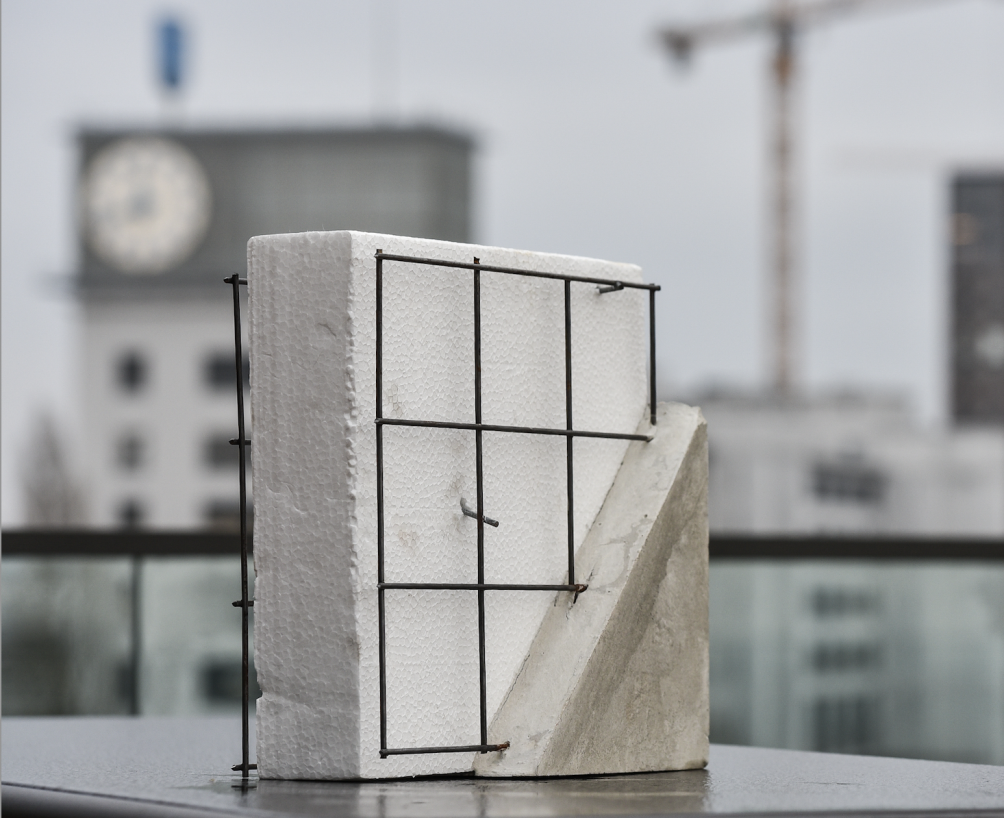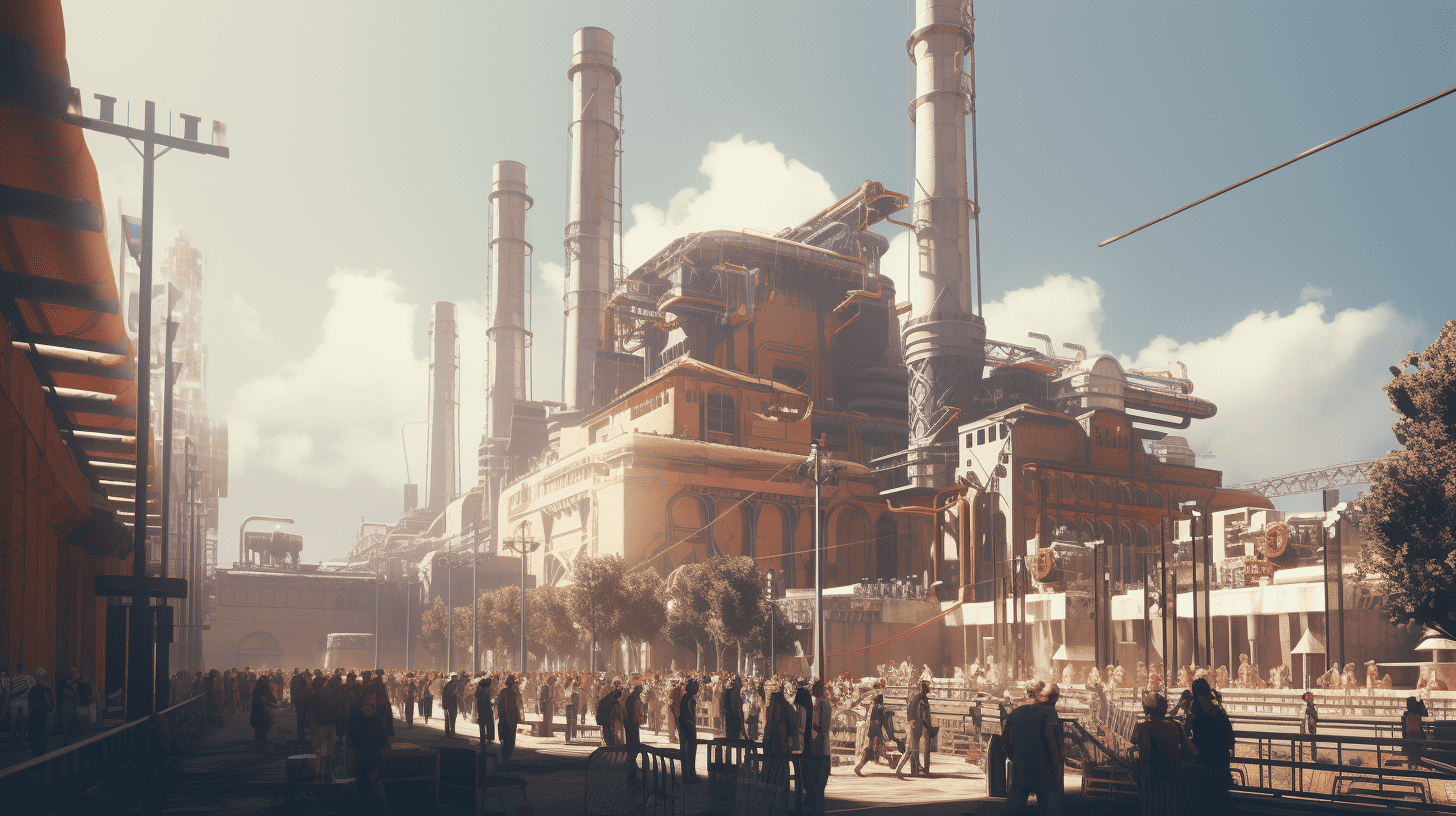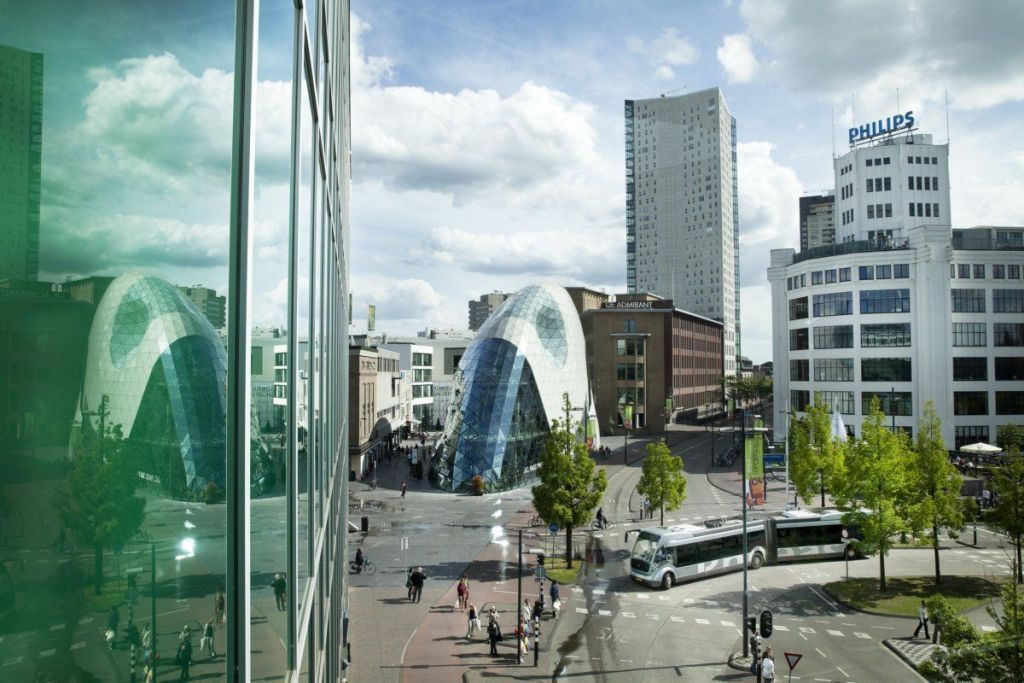
CO2 and nitrogen reductions, circularity, cost savings, increased speed of execution… it’s all on the already crowded plate of the construction industry. The architects, structural engineers, preparers, contractors, builders, and finishers: all have to deal with an ever-increasing mountain of requirements. And that’s not all: scarcer raw materials, a tight labor market and an ever-growing demand for housing are adding to the pressure. The construction sector is desperately looking for a breakthrough that links feasibility to sustainability. Mooduul, a young company from Eindhoven, claims to be able to offer that breakthrough. The first proofs have been delivered, but is our legal system ready for it?
In their trendy office in Eindhoven’s Strijp-T district, technical expert Coen de Natris and project manager Evelien Burgmans give a sneak peek into Mooduul’s secret. In front of them on the table is a model of the construction blocks Mooduul works with. Most striking: instead of the usual 15-centimeter thick building wall, it consists of two layers of 4.5 centimeters thick with an insulation layer with the steel nets for the pipes in between. The result: less raw materials, less weight, but nevertheless with the desired carrying capacity.

All this together has great advantages, says De Natris. “Our building system is able to achieve the same load-bearing values with 30 percent fewer materials. Less material and less weight: that means less CO2 emissions.”
Mooduul: A building concept in three steps
Configure. Produce. Realize. These are three steps that make Mooduul’s building concept special.
Configure: by first making a form-free digital design, you immediately generate error-free structural and technical designs.
Produce: prefabricated construction, but even faster and better thanks to the robotized, industrial production environment.
Realize: thanks to the digital preliminary process, negative surprises or dependencies on the building site are reduced to a minimum.
Integrating disciplines
At least as important is the completely digitalized design process. A traditional building system consists of a large number of different components, says Evelien Burgmans. “And that creates fragmentation within the building process. Work is done in clearly defined zones and there is virtually no coherence between the construction of the components. Just about everything is manufactured on-site. That’s not only labor-intensive but also very difficult to coordinate because of the many components you need to assembly.”
Mooduul has turned that process around by designing and building the components off-site as much as possible, integrating all disciplines within the construction process. That’s less labor-intensive and also more controllable due to limited variation, with all the implications for cost and speed. Moreover, the components are reusable – another important difference from traditional construction.

This does have implications for the system of design and production, De Natris emphasizes. “In the traditional building process, the architect is leading. He designs a building, describes the technical specifications and then the contractor with the lowest price is selected to make the work. That means that competition takes place based on the lowest price of objects that a client has come up with. If you were to let go of that and replace it by competing on the products developed by the sector itself, you immediately have a much better grip on quality and costs. Failure costs and unforeseen costs can thus be virtually excluded.”
Making details visible
Failure costs? “Yes, these are the costs that are incurred because imperfections have to be repaired or modified at the construction site. Whereas that is not necessary at all if you enter the variables into a computer program in advance.” De Natris, who specialized in software programming after studying mechanical engineering, envisions a future in which architects will be “a little less artist and a little more industrial designer.” “The practice is that in the Netherlands 90% of the houses are designed according to a certain standard pattern. With our computer program, in which we have brought together the worlds of architecture and computer science, we can make the details visible in advance. We can create a 3D model in no more than fifteen minutes, including accurate pricing. See, that’s what I mean by ‘preventing failure costs’.”
Read next: Belgium is becoming more sustainable by building with green concrete
This so-called ‘parametric design’ also has consequences that will sometimes feel like a limitation within the current system. Burgmans: “Yes, the architect and the contractor will have to accept that you can’t just change the position of a window on the building site, or place the wall sockets a few meters further away. But anyone who thinks logically sees that the future belongs to the concept house. The rules of the game are no longer determined by the architect, but they can realize their designs within the given framework. Our application then controls the entire construction process, from design to realization.”
Regulations
It is not only the holy houses of the architect and the contractor that Mooduul is fighting against, adds De Natris. “The biggest obstacle for us is the regulations. All current rules are completely in line with the traditional way of working. And however much our system has been validated – even by reputable scientists – the rules and regulations still put a brake on it. That’s a pity, of course.”
From theory to practice
Mooduul has already made the big step from theory to practice. The first proofs have been delivered in a health center in Zevenbergen, a villa in Zeist, a house in Soerendonk and a vacation park in Gulpen.
De Natris has no doubt that thanks to the power of data, digital processes, robotization, and industrialization, Mooduul can make the entire construction process faster, more sustainable, and cheaper. For that reason, he is also unwilling to make any concessions to the system and, above all, continues to look for support to amend the rules. But he realizes that this will take a long time. “We are leading the way and that means that sometimes you run into resistance. We are often advised to work more traditionally, but I don’t feel like that at all. You don’t want to detract from an ideal concept just to make the end result less good, would you?”
Burgmans can only agree: “As a new player, detached from conventions and traditions, we strive for perfection in the building process: efficient and without failure costs, throughout the entire chain. That’s the best way to contribute to solving the challenges of the construction industry. Exactly what we need at the moment.”







